Matador Network's Blog, page 753
November 4, 2020
Travel gear by Black-owned companies

While every year seems to bring new Kickstarter campaigns for innovative travel gear, we rarely get to see products designed, created, made, or sold by Black-owned companies. Even though Black travel is a multibillion-dollar industry, we’re still not finding a huge range of travel accessories tailored specifically to this market.
One of the biggest reasons why is access to investors and venture capital. Only one percent of venture-capital-funded startups have a Black founder. Still, some Black travel companies are flourishing through advertising, direct support from consumers, and by making some of the best travel gear out there.
If you need to update your own travel gear or you’re looking for a holiday gift and want to support a Black-owned brand, here are a few suggestions of where to start.
1. JADE Swim for swimwear

Photo: Jade Swim/Facebook
Brittany Kozerski, the former fashion market editor at Marie Claire, started JADE Swim because she was having trouble finding the perfect swimsuit. Today, her swimsuits might just be your new favorite go-to suit to toss in a carry-on. Designed to act as both a swim and bodysuit, and more than just loungewear, they perform just as well in the pool as they do at dinner.
JADE Swim utilizes fabrics that are meant to keep their shape wet or dry, so you never have to worry about wrinkling or bunching. They are made with sustainable fabrics in Los Angeles to exacting standards — and they’re built to last. These pieces are made to be much more than just a simple swimsuit and could become a staple in your resort wardrobe.
2. Tote & Carry for travel totes

Photo: Tote & Carry/Facebook
What are Finland's iconic Moomins

If you were from Finland, you would have grown up with tales of trolls and their offbeat friends, living in a world of their own. These Moomin characters may well have been a part of your childhood outside of Finland as well — since their stories have been translated into 50 languages.
The first Moomin book, The Moomins and the Great Flood, was written in the waning months of the Second World War and published in 1945. The book, the first in a collection of stories that would influence every child in Finland from then on, is 75 years old this year.
“Moomin is such a big part of Finnish childhood,” says Heidi Högfors, a Finnish mother whose two boys grew up with the Moomin stories. “It was also in my childhood as well. So it goes from generation to generation.”

Photo: Moomin
The Moomin family — Moominpappa, Moominmamma, and Moomintroll — live alongside a cast of quirky humans and a few other unusual creatures. The trolls are a friendly bunch, as are nearly all of the characters. Even those who appear frightening or angry are, like all the residents of Moomin Valley and the mountains beyond it, good inside.
The Moomin stories were written by Tove Jansson, the daughter of Finnish artists who had been struggling with her own creative career after dropping out of Paris’s École des Beaux-Arts and was dispirited by the devastation of WWII. With her brother off fighting in the war, Jansson wrote The Moomins and the Great Flood as a way to ease her mind. It tells the story of Moominmamma and her young Moomintroll searching the valley for their father.
The story, like all subsequent Moomin tales, confronts emotions like fear, loss, and loneliness but ends well — reaffirming the power of family, love, and friendship. Even the frightening creatures like The Groke, who is introduced later, are really just misunderstood and lonely.
“Even if there’s a scary part, the scary person is always kind inside,” says Högfors. “And this is also shown in the [cartoon] series. They are soft stories and friendly stories instead of having the kids get nightmares.”
Jansson was a member of the minority of Finns whose principal language is Swedish and first wrote her book in Swedish — although it was quickly translated into Finnish. Högfors and her family are also members of that Swedish-speaking minority, which now numbers about five percent of the Finnish population.
“It’s important for all the Finnish people,” says Högfors of the Moomin lore, but she notes that it feels special for her family to read it in the original language in which it was written. The Moomin books are also deeply popular in neighboring Sweden.
Because the Moomin cartoons that Swedes see are voiced by Swedish-speaking Finns, Swedes have come to associate the Swedish that Finns speak with Moomin Valley. Högfors says that when she met a Swedish mother some months ago, that mother said, “‘You speak Moomin Swedish.’”
The quirkiness of Jansson’s characters probably comes less from being a member of a minority language in Finland than from her own self-identity. Although she had serious relationships with men, Jansson eventually fell in love with her lifelong partner, Tuulikki Pietilä. The two saw each other secretly in Helsinki (same-sex relationships only became officially legal in Finland in 1971) and spent the summer months on an uninhabited island where they’d built a cottage. Some believe Pietilä is partly represented by the upbeat Too-Ticky, a can-do problem solver and close friend to the Moomin family.

Photo: Moomin
Many of Jansson’s characters like to spend time alone or cope with loneliness. There is Toft, a small, timid boy who struggles to feel a sense of belonging; the lighthouse keeper who, naturally, lives by himself; and Toffle, who is scared and lonely until he finds a friend.
Themes of solitude seem fitting in a country that appreciates the power of silence and the idea of relying on one’s own inner strength to persevere. Yet while one can find some distinctly Finnish traits amongst the Moomins, there are very universal ones as well — and each fan of the Moomin stories seems to find a character with which they most identify.
Högfors says her son Timmy, now 13, was always drawn to Stinky, a fuzzy creature who plays practical jokes on the Moomin family. Her younger son Dennis, 11, preferred Snufkin, a wise presence who loves fishing.
“The main thing is [Snufkin is] very calm, and that’s exactly Dennis,” says Högfors, noting that, “the choice of the children represents their personalities.”
For her own part, Högfors’s favorite character growing up was Little My, an impish young human with a bun of hair on the top of her head and a naughty grin who lives with the Moomin family. Högfors, who is as petite in our world as Little My is in the Moomin world, says she even dressed up as Little My for a traditional costume event during her last year of high school.
“I always liked Little My, the one who hits everyone with a frying pan,” laughs Högfors. “I get mad really quickly, but then I calm down really quickly. That’s exactly like her.”
Eventually, Jansson wrote nine Moomin books, four picture books, and a comic strip series that lasted years. Even today, the comic strip is kept up by a Jansson family member using the treasure trove of images created by Tove Jansson herself, who passed away in 2001.

Photo: Elena Noeva/Shutterstock
Finland has a Moomin Museum and a park called Moomin World. In keeping with Jannson’s own gentle disposition, Moomin World is not the loud, adrenaline-filled experience of a more typical amusement park. Rather, the leafy, wooded grounds let kids peer into the places of Moominvalley.
Moomin World is almost a right of passage for Finnish kids. Högfors’s own boys have been twice, she says, noting, “All Finns go at least once.” (My own half-Finnish kids have been as well.)
The Moomin stories have also been retold in films and last year Moomin Valley, an animated musical series began airing in Finland and the UK. Thirty years before that, in 1990, an anime cartoon series called Moomin, produced by a joint Finnish, Dutch, and Japanese production company, began airing. That cemented a love for Moomins in Japan, which has a Moomin Valley park as of last year, and which remains a major market for Moomin merchandise.

Photo: Muumimaailma – Moominworld/Facebook
In keeping with the calm Moomin motif, and perhaps with the Finnish ethos as well, that Moomin merchandise does not spread across an unruly swath of categories. Certainly children can rest comfortably at night with Moomin sheets while hugging their Moomin dolls, but the biggest joy of the day may be waking up to their Moomin breakfast cereals and Moomin mugs.
Högfors has several dozen mugs, some worth over a thousand euros, all made by the Finnish ceramic company Arabia. There are specialty mugs with certain characters and motifs that are made but once. It’s these that can quickly become collector’s items.

Photo: jonanderswiken/Shutterstock
Some Moomin mugs are released only in Japan, and while Högfors doesn’t know anyone personally who has flown to Japan to snap them up, she says she did read in the Finnish newspaper about avid Moomin fans who had flown to Tokyo just for the unveiling of a new Moomin mug.
Högfors concedes that her mother-in-law lined up at 6 AM one morning to snap up the specialty mugs to give to her grandchildren. “We still have them in packages,” says Högfors of those mugs, noting that they need to remain unused to keep their worth.
While she keeps the most valuable mugs in their original boxes, the majority of the Högfors’s mugs are a part of everyday life. As tweens and teens, her sons no longer read Moomin books, but they still drink from their Moomin mugs every morning, says Högfors.
In our own half-Finnish home, we too drink from Moomin mugs from time to time. I used to resist the Little My mug since the character has such a naughty look. Knowing her better now, recognizing that she is — in the words of the Moomin site itself — “honest and reliable,” I’m more inclined to drink from that particular white, black, and green mug.
Perhaps now would also be a good time to peruse the Moomin books that have languished on the shelf of our youngest child, now in his teenage years. In a turbulent and divided world, it might be nice to find the solace of a Moomin world where family and relationships matter more than anything else, and where even the scary creatures that live in the mountains are just looking for a friend. 
More like thisFashionMarimekko, Finland’s iconic brand, is nothing like minimalist Nordic design clichés
The post Finland’s most iconic cartoon characters, the Moomins, turn 75 this year appeared first on Matador Network.

Hawaiian ranch from ‘Lost’ sale

Now that Hawaii is open to out-of-state visitors without the need to quarantine, it’s the perfect time to go house hunting in paradise. And if the COVID-19 pandemic has taught us anything, it’s that easy access to nature and a little isolation from other people is key to a healthy, relaxing lifestyle, so this ranch for sale on Oahu’s North Shore is just the thing we need.
On top of being stunning, the Hawaiian ranch also has some pop culture appeal as it was used in the filming of various jungle scenes in Lost, during the first and second seasons.

Photo: Cushman & Wakefield
The Dillingham Ranch covers 2,700 acres and has been in disuse for several years. The property stretches from the oceanfront at Kaihalulu Beach to the Waianae Mountains, with views of Ka’ena Point and some of the island’s best surfing beaches. It’s the largest contiguous land offering for sale on Oahu right now.

Photo: Cushman & Wakefield
But street cred and 18.8 acres of oceanfront land in Hawaii come at a price, namely an eye-watering $45 million.
The ranch is currently used for cattle grazing, farming, equestrian activities, and polo, but for a creative owner the possibilities are truly endless. 
More like thisMovies9 movies filmed in Hawaii that will make you want to travel there
The post The oceanfront Hawaiian ranch from ‘Lost’ is up for sale appeared first on Matador Network.

Leonid shower 2020

There’s nothing like looking up at the starry sky to take your eyes off the news cycle. This year, luckily, the Leonid meteor shower will be streaking across the sky from Friday, November 6 through Monday, November 30, and since the moon will be in crescent form, the shower will be highly visible. You should still try to watch from a place with low light pollution, however.
The shower is expected to peak on the evening of November 16 and early morning of November 17, between midnight and dawn. You’ll want to let your eyes adjust to the darkness for 20 minutes before viewing — so give yourself some lead time.
It’s called the Leonid shower because the meteor seems to originate from a point in the Leo constellation. The streaks we see in the sky are caused by particles as small as a grain of sand, which are responsible for the brilliant visuals. When the cometary debris enters Earth’s atmosphere at 43 miles per second, the debris is vaporized, resulting in the streaks.
The Leonid shower is one of the faster and brighter annual showers, producing a prolific number of meteors, so if you’re going to catch one shower this year it should probably be this one. 
More like thisAstronomy12 stargazing events you don’t want to miss in 2020
The post The Leonid meteor shower will streak across the sky in a dazzling display this month appeared first on Matador Network.

Sauerkraut on Thanksgiving

For most Americans, sauerkraut has a very specific utility: It’s a condiment for hot dogs, sausages, and Reuben sandwiches. But if you hail from Maryland, sauerkraut appears in an unexpected place: the Thanksgiving dinner table. For Baltimore residents in particular, sauerkraut is as much of a must-have holiday side dish as mashed potatoes and gravy.
This sour side dish — made from a simple concoction of cabbage fermented in salt — is tied to the city’s long history of German and Eastern European immigration. In 1863, in the middle of the Civil War, President Abraham Lincoln declared Thanksgiving a national holiday. During this period of unrest in the United States, Baltimore became the “gateway,” for German immigrants, according to The Baltimore Sun, to the point that, “one in four of the city’s residents were transplanted Germans and spoke the tongue as their first language.”
For at least 2,000 years, this pungent dish has been a dietary staple prized for its nutritional properties around the world. The workers who built the Great Wall of China ate it, as did Dutch sailors to prevent scurvy. In the US, thanks to Baltimore’s German newcomers, it transformed from sustenance for laborers to a Thanksgiving tradition. Eager to adopt American customs without abandoning the cuisine of their homeland, they prepared batches of sauerkraut for Thanksgiving dinner. More than 150 years later, Marylandians are still eating sauerkraut with turkey — regardless of each family’s relationship to Baltimore’s history of German immigration.

Photo: iuliia_n/Shutterstock
Rachel Rappaport, a Baltimore-based recipe developer and cookbook author, remembers her mother serving Silver Floss canned sauerkraut during the holidays — despite the fact that her family isn’t “particularly German.” The tradition is so entrenched in the lives of Maryland residents of all backgrounds, that Rappaport didn’t even realize it wasn’t a nationwide custom until she got to college.
“We’ve been in Baltimore since the 1800s, living in Pigtown and working for the B&O,” she says. “I went to college locally but I met people there and when we talked about traditions it came up when sharing our favorite dishes. I said we always had it or I liked it with cranberry sauce and people from out of state seemed confused. I thought they were clearly missing out.”
Rappaport tells me that it actually makes sense to have the slightly tangy sauerkraut as an accompaniment to a turkey dinner, because it cuts through the richness of gravy.
Meghan Long, a fundraiser for an environmental nonprofit, grew up in Thurmont, Maryland (though she’s since moved to Oakland). Long tells me sauerkraut was “a staple at the holiday table, particularly Thanksgiving, but sometimes Christmas and Easter as well,” mostly at the request of Long’s grandfather.
Long has close ties with Maryland’s community of German immigrants: Her father’s family has lived in Thurmont since the late 1700s, but she was raised going to her grandfather’s German church, the Graceham Moravian Church, which served sauerkraut as a side at the twice a year turkey and oyster dinners for congregation members. Long recalls that at a young age she learned to stuff an oyster inside a potato roll, then top it with mashed potatoes and sauerkraut.
“I think I knew to associate [sauerkraut] with German immigrants,” Long says, “as being white in the US gives me the privilege of knowing where my ancestors came from. I understood it was connected to our family’s German side and I learned about the migration patterns of German immigrants at a pretty young age.”
Long sent me direct message exchanges with several friends from Maryland who told her that sauerkraut was a constant presence around the holidays in their homes. One friend, named Melanie, wrote that her mother served it on New Year’s with ham and potatoes; she recalls her grandfather telling stories about how his mother made batches of sauerkraut in huge clay pots. “I ate it then, still love it, and it came from my German side of the family,” she said.
A second friend, named Ryan, wrote that he recalls eating sauerkraut during every holiday celebration, including Thanksgiving and Christmas, but he too conceded that, in his family, New Year’s was particularly important when it came to setting the table with sour cabbage: “My grandmother would [freak] out if we didn’t have black eyed peas, sauerkraut, and pork on New Year’s Day.”

Photo: Joerg Beuge/Shutterstock
There are even some transplants to Baltimore who have fallen for sauerkraut. Shane and Meaghan Carpenter moved to the city from the Midwest — another region with a large concentration of German immigrants — 15 years ago, and now provide batches of the sour cabbage to their eager fellow residents at their company, Hex Ferments.
“Meaghan grew up making sauerkraut with her Grandmother and pickles with her parents,” the pair wrote me in an email. “We knew that Sauerkraut was an imperative addition to our offerings, the trick was to get the aging process down so that my Grandmother would not haunt me.”
The Carpenters didn’t realize that sauerkraut was a holiday tradition in Maryland until they opened their shop in 2013 — a discovery they now call “serendipitous.” Today, their Thanksgiving dinner isn’t complete without a batch of sauerkraut.
“Thanksgiving is…the only time of the year when we cook our sauerkraut,” Meaghan wrote, “which we start first thing in the morning in a small crock-pot or saucepan and it simmers all day until it’s time to eat. Our version is different than my Grandmothers, who fed her sauerkraut sips of vodka all day.”
Sauerkraut is as versatile as it is deeply rooted in American traditions of immigration. Maybe your ancestors immigrated to Baltimore from Germany or your family adopted the tradition because fermented cabbage works surprisingly well with the buttery richness of mashed potatoes, gravy, and turkey. Maybe you can’t eat a hot dog without it, or you grew up using it as a topping for oysters. There are so many ways to fall in love with fermented cabbage, but we can be certain of one thing: Sauerkraut has certainly earned its place in the pantheon of American Thanksgiving side dishes. 
More like thisFood + DrinkThe Midwest is the home of the casserole. These are the ones to try
The post In Baltimore, sauerkraut is a surprising Thanksgiving tradition appeared first on Matador Network.

American Airlines at-home COVID test

Airlines clearly view preflight testing as the key to jumpstarting the travel industry, as evidenced by the consistent unveiling of new testing programs over the past few weeks. American Airlines is expanding its own testing program to allow for greater accessibility and availability on more flight routes.
On November 16, the airline will expand its partnership with LetsGetChecked to offer at-home PCR tests to customers traveling to Belize, Grenada, and St. Lucia. Results will take 48 hours to process, meaning they should arrive in time to clear you for your trip.
For Belize, customers must complete testing within 72 hours of departure, while for Grenada and St. Lucia testing must be completed within seven days of departure. It’s important to keep in mind that passengers won’t be allowed to board a flight to St. Lucia without evidence of negative test results.
Starting today, preflight testing will also be available for flights to Hawaii from Chicago, Los Angeles, and Phoenix. Results will be ready in 48 hours, and tests must be completed within two hours of the final leg of departure.
According to a press release, it’s an “at-home testing option that includes observation by a medical professional via virtual visit.”
Currently, 13 airports in the US are offering on-site testing, as well as several airlines. 
More like thisTravel SafetyCan we trust negative COVID-19 tests as a green light for travel? We asked a travel doctor.
The post American Airlines is offering at-home COVID-19 testing for several routes appeared first on Matador Network.

November 3, 2020
Nepal is opening to climbers

For the first time in seven months, Nepal is reopening to foreign visitors. Tourism is a huge source of income for Nepal, so despite a surge in COVID-19 cases and a shortage of hospital beds in the country, they’re looking for ways to safely welcome back visitors. The reopening has some fairly harsh restrictions, however, and only applies to those looking to enter Nepal for climbing or trekking.
Rudra Singh Tamang, the director-general of Nepal’s Department of Tourism, told the Associated Press: “We are not opening the country for all visitors and only mountaineers and trekkers who have taken prior permit will be allowed to come to Nepal. We are opening to a sector of visitors who we know we can handle and manage.”
To enter the country, visitors must get prior approval by providing the details of their itinerary, hiring a local outfitting company, and showing proof of health insurance that covers COVID-19 treatment. Visitors are also required to take a COVID-19 test before leaving their home country, quarantine for one week at a hotel in Kathmandu upon arrival, and then take another test before being allowed up the mountain. Local guides are also required to take COVD-19 tests and prove they have been living in an infection-free area for two weeks.
According to Tamang, “We are trying to revive the tourism industry that was badly hit by the pandemic, but we are not taking any changes or any risks. We did a test run just recently with a foreign expedition team and now have a good idea how to manage the adventure tourists.”
Nepal’s tourism industry employs 800,000 people, and many have been negatively impacted by the closure. Even though the resumption of tourism is piecemeal, it’s good news to tourism workers excited to welcome visitors back to the mountains. 
More like thisHiking5 gorgeous Himalayan treks you don’t need to train for
The post Nepal is reopening to tourism, but only for mountain climbers and trekkers appeared first on Matador Network.

23 of the clearest waters on Earth
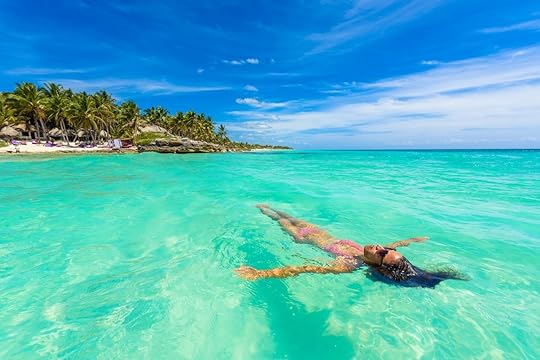
SEVENTY-ONE PERCENT of our planet is covered in water, from oceans to mountain lakes to cenotes. Over time, the names and boundaries of these bodies of water have changed to reflect political, geographical, and historical occurrences. What hasn’t changed, however, is the ability of these natural lakes, lagoons, and bays to instill a sense of calm and wonder to their visitors. From Ko Phi Phi in Thailand to Wineglass Bay in Australia and Lake Tahoe in the US, these are the bluest, clearest waters anywhere on planet Earth.
1. Bora Bora, French Polynesia
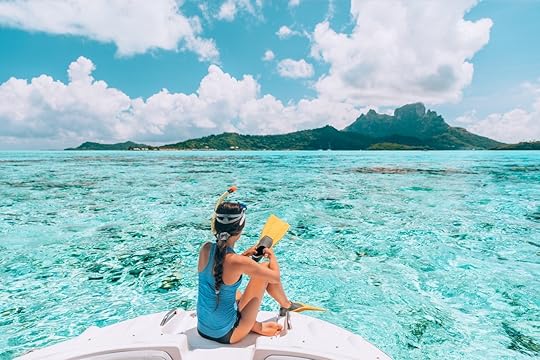
Photo: Maridav/Shutterstock
Home to a multitude of luxury resorts on stilts above the water, Bora Bora attracts tourists from all over the planet looking to get an eyeful of clear, turquoise waters. The fine white sand surrounding the island accounts heavily for the clarity and color. Whether it’s snorkeling, dolphin and whale watching, or a sunset cruise, there is no shortage of ways to enjoy the stunning waters of this Polynesian paradise.
2. Dog Island, Panama
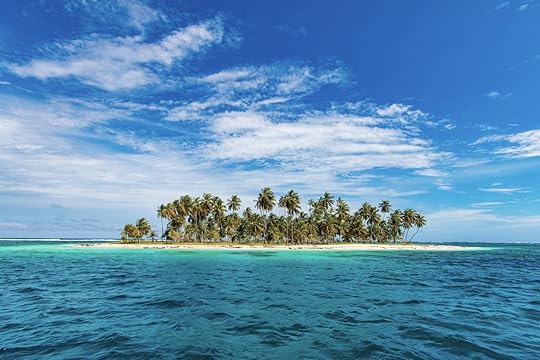
Photo: Ste Lane/Shutterstock
Dog Island is one of the San Blas Islands off the north coast of Panama. It might not be populated solely by dogs, but the fact that it doesn’t live up to its name shouldn’t deter you from visiting. It’s considered to have some of the cleanest water in the world, making it a top snorkeling and diving destination. One of the island’s most distinctive characteristics is the shipwreck on its shores, which you’ll be able to see quite clearly if you do dive.
3. Five Flower Lake, China
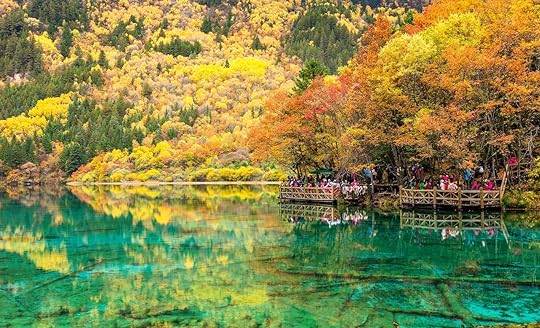
Photo: Raindear/Shutterstock
Five Flower Lake is part of Jiuzhaigou Valley, one of China’s nature reserves and national parks. The clarity of the shallow lake (only 16 feet at its deepest) allows visitors to see the many crisscrossing tree trunks that have fallen into it. The lake takes on a multitude of gorgeous colors from the surrounding forest, including yellow, green, jade, turquoise, coral, and sapphire blue. Due to an underwater hot spring, the water doesn’t freeze in winter, so you can visit all year round.
4. Ko Phi Phi, Thailand
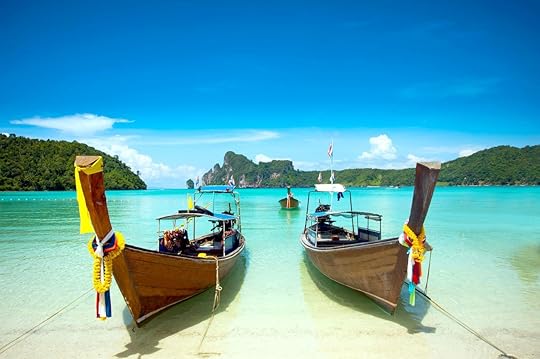
Photo: C_KAWI/Shutterstock
The Phi Phi islands consist of two large islands (Ko Phi Phi Don and Ko Phi Phi Leh), as well as several smaller ones, and is known primarily for its unbelievably clear waters, white-sand beaches, and lush vegetation. The area is also famous for the limestone karsts that protrude out from the sea. The popular movie The Beach, featuring Leonardo Dicaprio as a backpacker, was filmed on Ko Phi Phi Leh.
5. Cayos Cochinos, Honduras
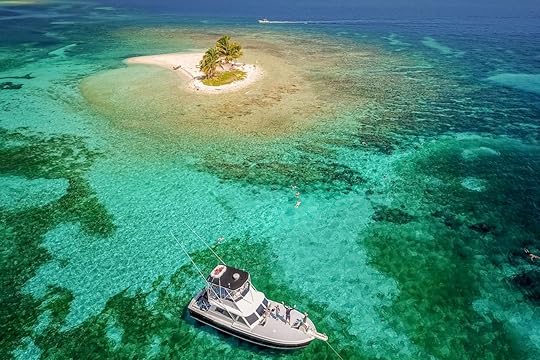
Photo: Kieran Reeves Photography/Shutterstock
Cayos Cochinos (comprised of two small islands and over a dozen small coral cays) are protected by the Honduran government and remain off-limits to commercial fishing, as well as hotels and resorts, which has contributed to the pristine look of the waters. The islands are home to some of the best scuba diving in the world and are only accessible by boat.
6. Moraine Lake, Canada
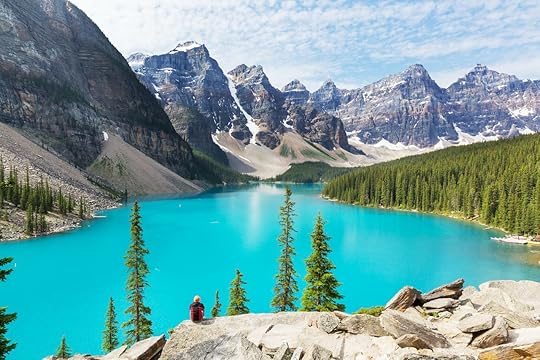
Photo: Galyna Andrushko/Shutterstock
Located in Alberta’s Banff National Park, in the Valley of the Ten Peaks, Moraine Lake is fed by glaciers. The glacial sediment deposited by the runoff gives the lake its turquoise color. Surrounded by mountains and waterfalls, the setting couldn’t be more dramatic and picturesque.
7. The Maldives
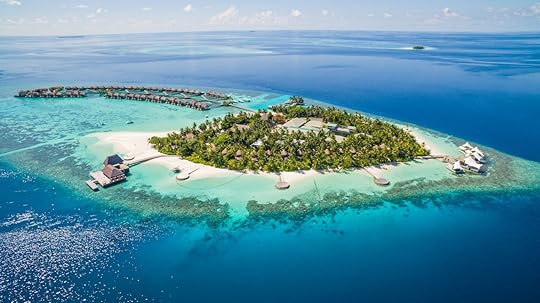
Photo: Firushan Numaan/Shutterstock
The Maldives is an island chain in the Indian Ocean with the lowest elevation of any nation in the world. The waters surrounding the 26 atolls provide for some of the best snorkeling and scuba diving anywhere. From its cabana-like resorts to white-sand beaches and wildlife-viewing experiences, there are plenty of excuses to visit this out-of-the-way paradise.
8. Navagio Beach, Greece
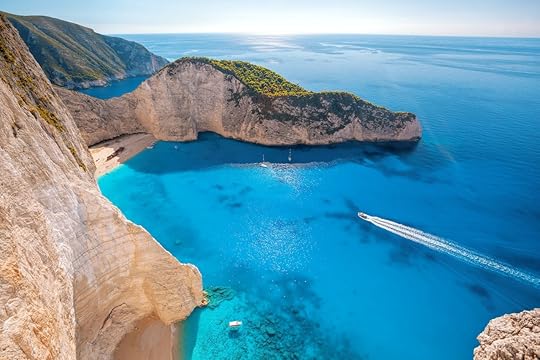
Photo: Samot/Shutterstock
Located off the coast of Zakynthos, one of the Ionian Islands, Navagio Beach (also known as Shipwreck Beach) is famous for its turquoise waters, white sand, limestone cliffs, and huge rusty shipwreck just waiting to be explored. According to legend, the ship belonged to smugglers working on behalf of the Italian mafia.
9. Linapacan Island, Philippines
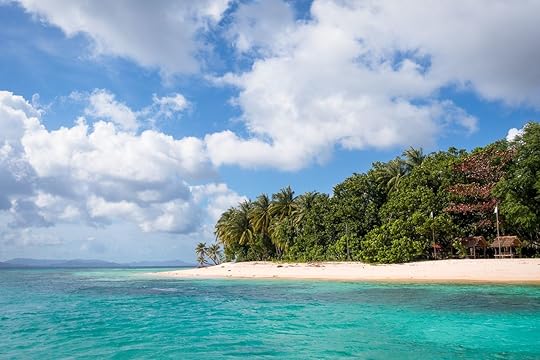
Photo: N8Allen/Shutterstock
Located in the province of Palawan, Linapacan Island is surrounded by 52 mostly deserted beach islands and incredibly clear water. It’s home to the Seniora caves, which are thought to be over a million years old, as well as an old Spanish fortress and jungle trails that will keep hikers busy. Linapacan has two small towns of about 2,000 people each, and you’ll find the area is still relatively free of tourists.
10. Jenny Lake, USA
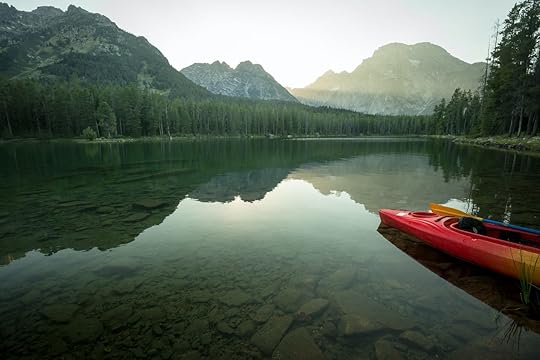
Photo: Evan Austen/Shutterstock
Located just east of the Grand Tetons in western Wyoming, Jenny Lake sits alongside some of the park’s most popular hiking trails, including Cascade Canyon, Hidden Falls, Inspiration Point, and Paintbrush Canyon. It’s one of just two lakes in Jackson Hole where motorboat access is allowed, though this doesn’t disrupt the color or clarity of the water, which often displays some stunning reflections.
11. Lake Pukaki, New Zealand
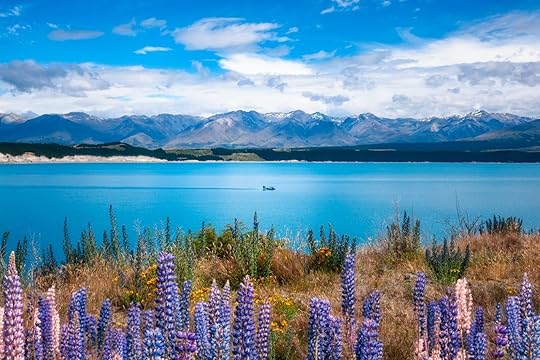
Photo: Daniela Constantinescu/Shutterstock
Lake Pukaki is the largest of three near-parallel lakes on the northern edge of the Mackenzie Basin on New Zealand’s South Island. Deriving its strong blue color from glacial flour (very fine silt particles), New Zealand’s Lake Pukaki is a glacier-fed alpine lake. When the sun gleams off the lake’s surface, it reflects the glacial flour turning it a striking blue color. The surrounding peaks and vast sky make this body of water a must-visit.
12. Mo’orea, French Polynesia
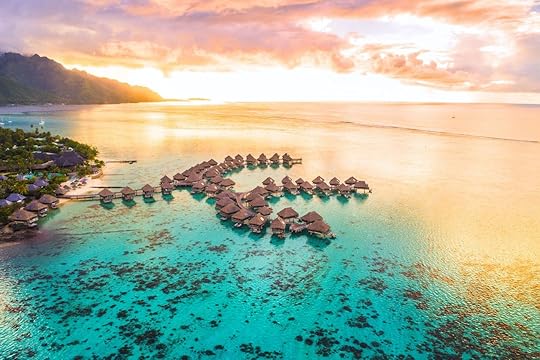
Photo: Maridav/Shutterstock
Thanks to its picture-perfect blue waters and lush scenery, Mo’orea has become a popular honeymoon destination. An island near Tahiti, Mo’orea is defined by its meadows, waterfalls, and its idyllic lagoon. The pastel-painted homes and quiet villages complete the picture of paradise. For those looking for a dose of escapism, you really can’t do better than Mo’orea.
13. Great Barrier Reef, Australia
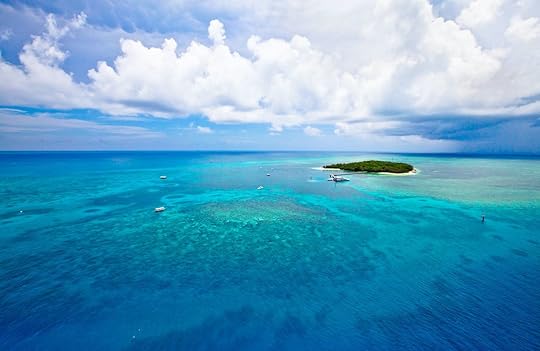
Photo: Renjie Sun/Shutterstock
The world’s largest coral reef system and one of the most popular diving locations on the planet, the Great Barrier Reef has some of the clearest, bluest waters in the world. Thanks to this clarity, the reef can even be seen from space. It was named a World Heritage site in 1981 and is one of the seven natural wonders of the world. Protected from human encroachment, the reef’s waters are crystal clear, allowing divers to observe the abundant marine life. Climate change is threatening the reef’s fragile ecosystem, however.
14. Corfu, Greece
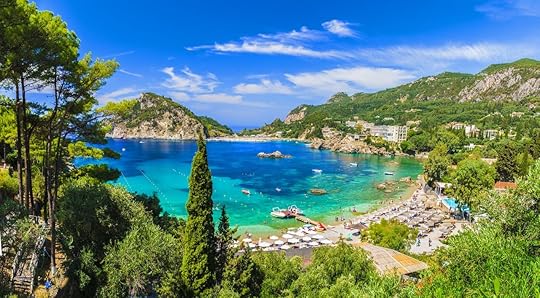
Photo: Balate Dorin/Shutterstock
The waters off the coast of Corfu, the second largest of the Ionian Islands, are amazingly clear. The beach at Canal D’Amour in Sidari is one of Corfu’s most famous for its rectangular creek with sand-colored walls. According to local custom, any couple who swims together through the beach’s sea tunnel will get married.
15. Lake Tahoe, USA
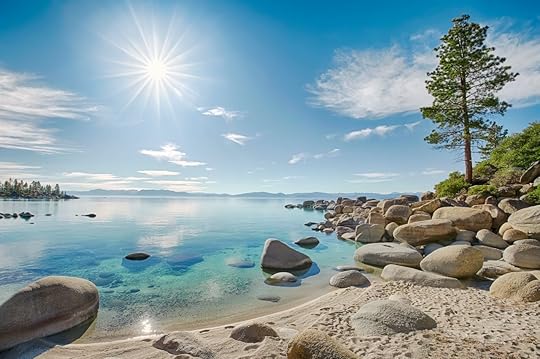
Photo: topseller /Shutterstock
After the Great Lakes, Lake Tahoe is the United States’ largest lake by volume (and the deepest after Oregon’s Crater Lake). While many parts of the lake may not appear clear due to its depth, size, and storm-water runoff, less-impacted spots on Lake Tahoe’s shores show the water’s true colors. From beaches and cycling paths to boating, restaurants, and hiking trails, there’s plenty to do on the lake. You can catch the best views from Emerald Bay by taking the Heavenly Mountain Coaster.
16. Tulum, Mexico

Photo: Simon Dannhauer/Shutterstock
Tulum is home to the ruins of a pre-Columbian Maya city, but tourists also flock there for its white-sand beaches and clear water. Alongside the blue waters lies the Yucatan jungle for an experience either relaxing or rugged — depending on your preference. The many beach resorts and bars make it a fun destination, but the jungle and ruins add rich outdoor and cultural appeals as well. The area is also well known for its cenotes (natural sinkholes), filled with beautiful, clear waters, some of which are open to swimmers.
17. Peyto Lake, Canada
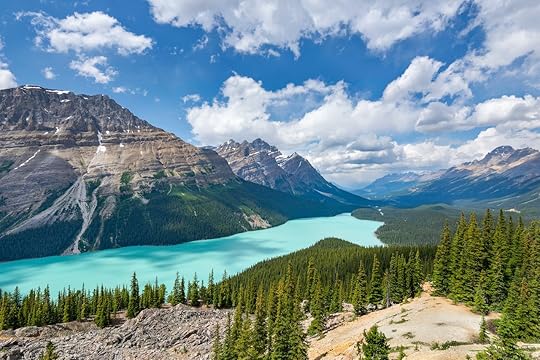
Photo: Levi Coreman/Shutterstock
The rock flour deposited from the glacial runoff gives Peyto Lake its vibrant blue color. Considered one of the most beautiful lakes in the world, Peyto Lake is best viewed from the Bow Summit along the Columbia Icefields Parkway, or the Peyto Lake Lookout in the wintertime. The color is ever-changing, too, according to the season and time of day, so you’ll always be treated to a slightly different experience.
18. Panari Island, Japan
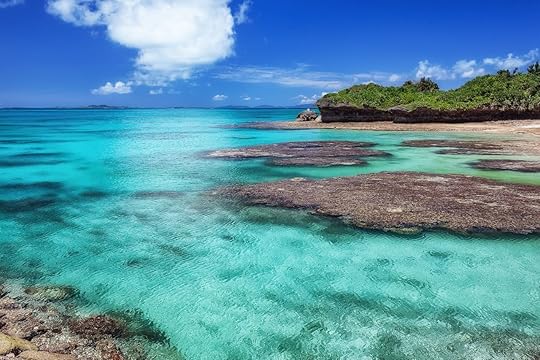
Photo: w.aoki/Shutterstock
Panari, also called Aragusuku, and the other Okinawan islands make up the most remote part of Japan, located a few hundred miles east of Taiwan. Composed of two islands — Jamiji and Shimoji — the Panari Islands are home to just 15 permanent residents. The only way to visit is by joining a tour conducted by a travel agency or dive shop, but its lack of accessibility has helped preserve its landscape and residents’ way of life. If you do make it there, check out Koijigahama beach near the pier on Kamiji Island, where you can relax by the quiet cove.
19. Perhentian Islands, Malaysia
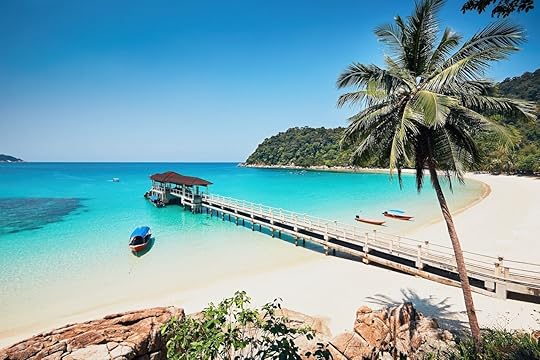
Photo: Jaromir Chalabala/Shutterstock
Two main islands, Perhentian Besar and Perhentian Kesil, make up the Perhentian Islands off the eastern coast of Malaysia. The islands’ crystal-clear water and white-sand beaches makes for an epic snorkeling experience, and jellyfish, turtles, reef sharks, and colorful reef fish can be observed easily by swimmers and divers. Fishing is off-limits since the area is part of the Pulau Redang National Marine Park.
20. To Sua Ocean Trench, Samoa
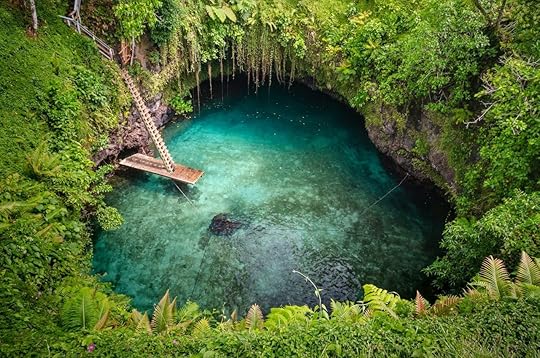
Photo: Martin Vlnas/Shutterstock
Found in Lotofaga, a small village on the island of Upolu, Samoa, the To Sua Ocean Trench is a large swimming area filled with tropical fish and surrounded by lush greenery. The clear, vibrant blue water is fed through a cave leading out to the ocean. To Sua literally translates to “giant swimming hole.” The hole is 98 feet deep and accessible from a platform by a wooden ladder, but you can also choose to jump or dive into the hole.
21. Whitehaven Beach, Australia
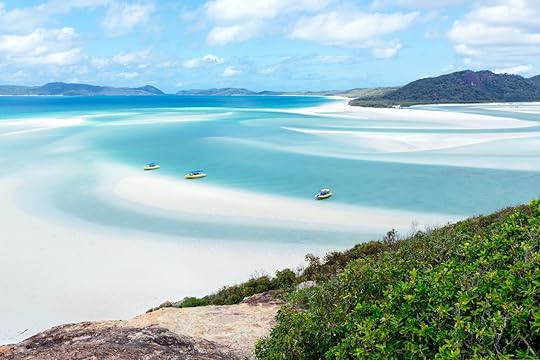
Photo: autau/Shutterstock
The sand of Whitehaven Beach, a 4.3-mile stretch of coast in Queensland’s Whitsunday Islands, is composed of 98 percent silica, which accounts for its fine texture and bright white color. It’s located in the heart of the Great Barrier Reef and is considered one of the cleanest beaches in Australia. The silica also causes the clear waters and shallow sands to assume an impressive swirling pattern and luminescent color. While snorkeling might be the easiest and accessible way to experience the waters, you can also take a helicopter or seaplane for a truly memorable view from above.
22. Crater Lake, USA
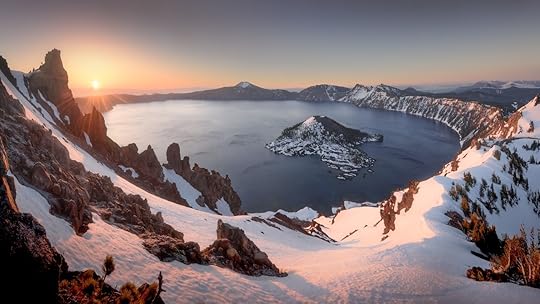
Photo: Theerapat Chawannakul/Shutterstock
The main attraction of Oregon’s national park, Crater Lake is known for its dark, deep blue water. The lake sits in a caldera, which was created after the collapse of the Mount Mazama volcano over 7,000 years ago. It’s the deepest lake in the US at around 1,943 feet, as well as the purest, fed largely by rain and snow. Scientists believe Crater Lake is the cleanest and clearest large body of water in the world. In addition to the lake itself, you can explore the volcanic geological remnants left by the volcano’s collapse, including the “Phantom Ship” island formation. There’s also an abundance of old-growth forests, with trees ranging from ponderosa pines to ancient whitebark pines, and wildlife from spotted owls to elk and black bears.
23. Wineglass Bay, Australia
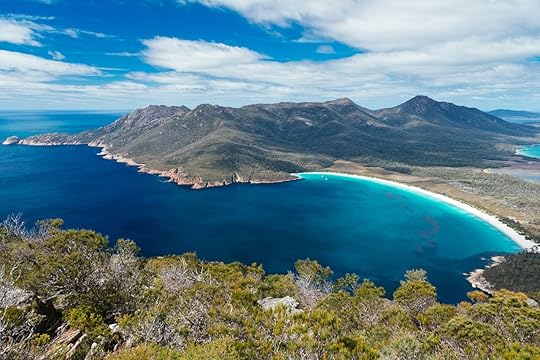
Photo: Henshaw Imagery/Shutterstock
Famous for its white-sand beaches and sapphire waters, Wineglass Bay is a secluded area in Tasmania’s Freycinet National Park. Hiking, sailing, and fishing are popular in Wineglass and Coles Bay, as well as sea kayaking, rock climbing, boating, and bushwalking. Pink granite mountains rise up from the sea to form a sheltered waterway, and there is an abundance of birds (especially white-bellied sea eagles) waiting to be spotted flying over the pristine waters. One of Australia’s top beaches, Wineglass Bay often draws tourists looking to picnic, camp, birdwatch, scuba dive, or go mountain biking. 
A version of this article was previously published on August 12, 2014, and was updated on November 3, 2020, with more information.
More like thisParks + Wilderness9 of the clearest waters in the US to go wild swimming
The post 23 of the bluest, clearest waters on the planet appeared first on Matador Network.

Perfect gifts for women travelers
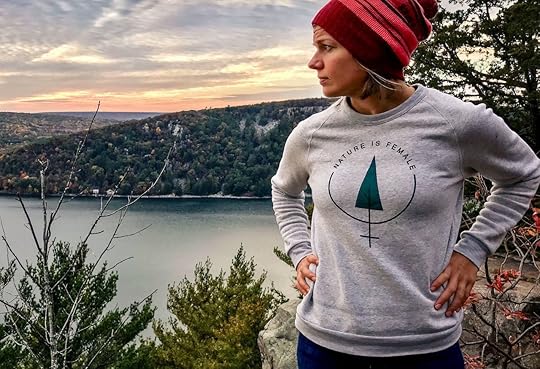
The frequent traveler in your life more than likely doesn’t need another neck pillow or portable charger, so what to give them this year? After such a turbulent 2020, we all deserve a little treat this year.
We’ve put together this gift guide for solo female travelers by selecting companies owned and operated by women. The passion and strong values held by each of these businesses will undoubtedly make you feel more positive about the world and comfortable spending your hard-earned money. For the special woman in your life, here’s a selection of gift ideas to kick your holiday shopping off.
Health Habitat Travel Tumbler from Salmon Sisters, $32
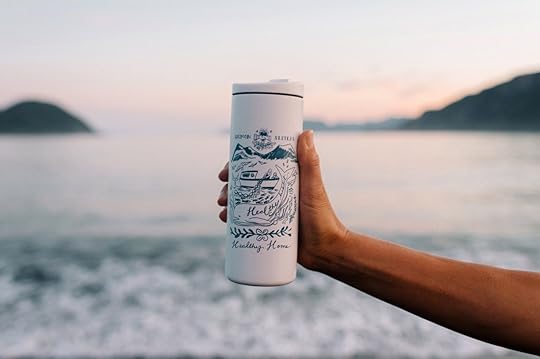
Photo: Salmon Sisters/Facebook
Salmon Sisters is a family business owned and operated by fishermen and sisters, Claire and Emma. The siblings grew up in Alaska’s remote Aleutian Islands, and through their products they strive to tell the story of Alaskans’ connection to the ocean. As well as their frozen fish boxes and stunning cookbook, they have a range of outdoor gear and accessories.
Their travel tumbler is insulated with a double-wall vacuum to keep your coffee or tea either hot or cold for longer. As the product description reads, the design and function celebrates “the crucial habitats that sustain healthy fisheries and diverse ecosystems. When we take care of these wild places, they take care of us too.”
As if we could not love this company anymore, Salmon Sisters also gives back 1 percent of net profits to the Food Bank of Alaska.
Snow gear and T-shirts from Coalition Snow, from $45
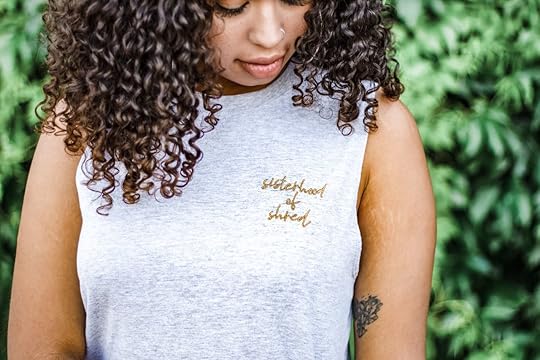
Photo: Coalition Snow/Facebook
Jen Gureki, founder of Coalition Snow, set out to “deconstruct the status quo,” and she and her team have certainly done that.
“We were tired of watered-down and pinked-up men’s equipment,” proclaims the company’s statement. “We know we deserved better equipment and community saw us, heard us, valued us and put us front and center. So we said goodbye to the shink-it-pink-it method and bro culture and said hello to something more.”
Coalition Snow is one of the few women-run ski and snowboard makers in the world. It goes beyond crafting performance-driven skis and snowboards, though, and is outspoken about achieving equality.
“Don’t let the she/her/hers pronouns fool you,” as the statement says. “We believe that the recipe for making a kick-ass pair of skis or snowboards has nothing to do with what’s between your legs but what’s between your ears and in your heart.”
Coalition Snow crafts boards and skis, as well as a range of really cool apparel and accessories, from embroidered tanks and shirts to yoga pants and stickers.
Carry on Starter Kit and Go Clutch mini by BlackTravelBox, from $35
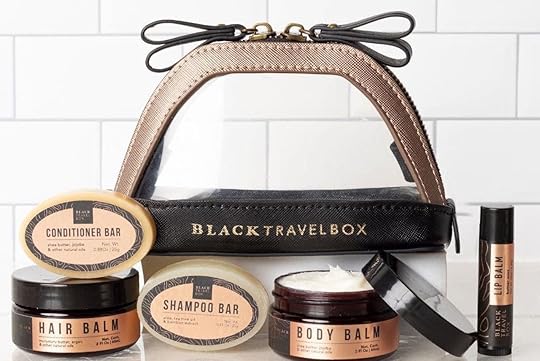
Photo: BlackTravelBox
“I started BlackTravelBox to give women of color a brand they could trust for their travel personal care needs,” founder and CEO Orion Brown declares on the company’s About Us page. “As Black travelers, we have few places we can find products that work for our hair and skin care needs.”
Since 2017, Brown has passionately worked to get the company off the ground and now has a huge range of beauty products made from natural or naturally derived ingredients.
The Carry on Starter Kit of beauty products is TSA friendly, giving travelers peace of mind when navigating security. Come November, the company is bundling the kit with its Go Clutch mini in a snazzy gift box, perfect for the holidays.
Travel Hair Kit by Briogeo, from $23.99
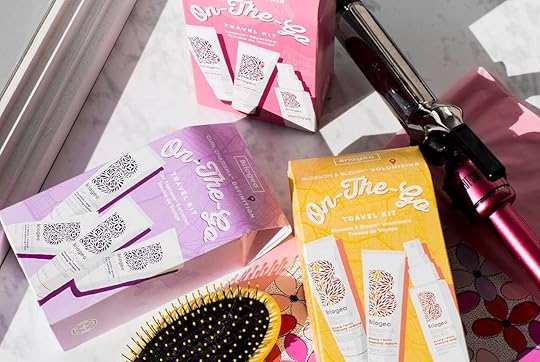
Photo: Briogeo/Facebook
Nancy Twine grew up blending natural ingredients together for homemade beauty products. She turned her hobby into a business when she launched Briogeo, a haircare collection that goes back to the basics while providing results. All products are 90 to 100 percent naturally derived.
We love a success story, but also Briogeo’s diverse range of products that cater to all hair types. The company has a quick online quiz you can take to customize your product selection. Pick from the nice range of travel kits to make sure your loved one gets the perfect on-the-go haircare.
Vegan leather backpack by MinkeeBlue, $139
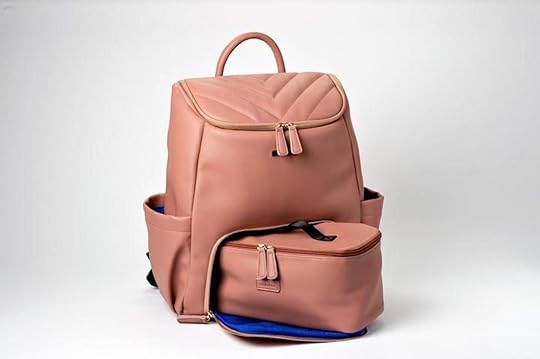
Photo: Minkeeblue
Sherrill Mosee was driven to design bags that solved what she calls the “overload bag syndrome.” The result is MinkeeBlue’s range of backpacks, which are an ideal carry-on. Each is perfect for the smart traveler who likes their laptop, shoes, and passport all in the correct place.
Her range of Nichet Backpacks are expertly designed with a folding panel that transforms the bag into two compartments, various external and internal pockets, a padded laptop bag, and a suitcase sleeve.
Reflection Wool Blanket by Milo Creations, $200
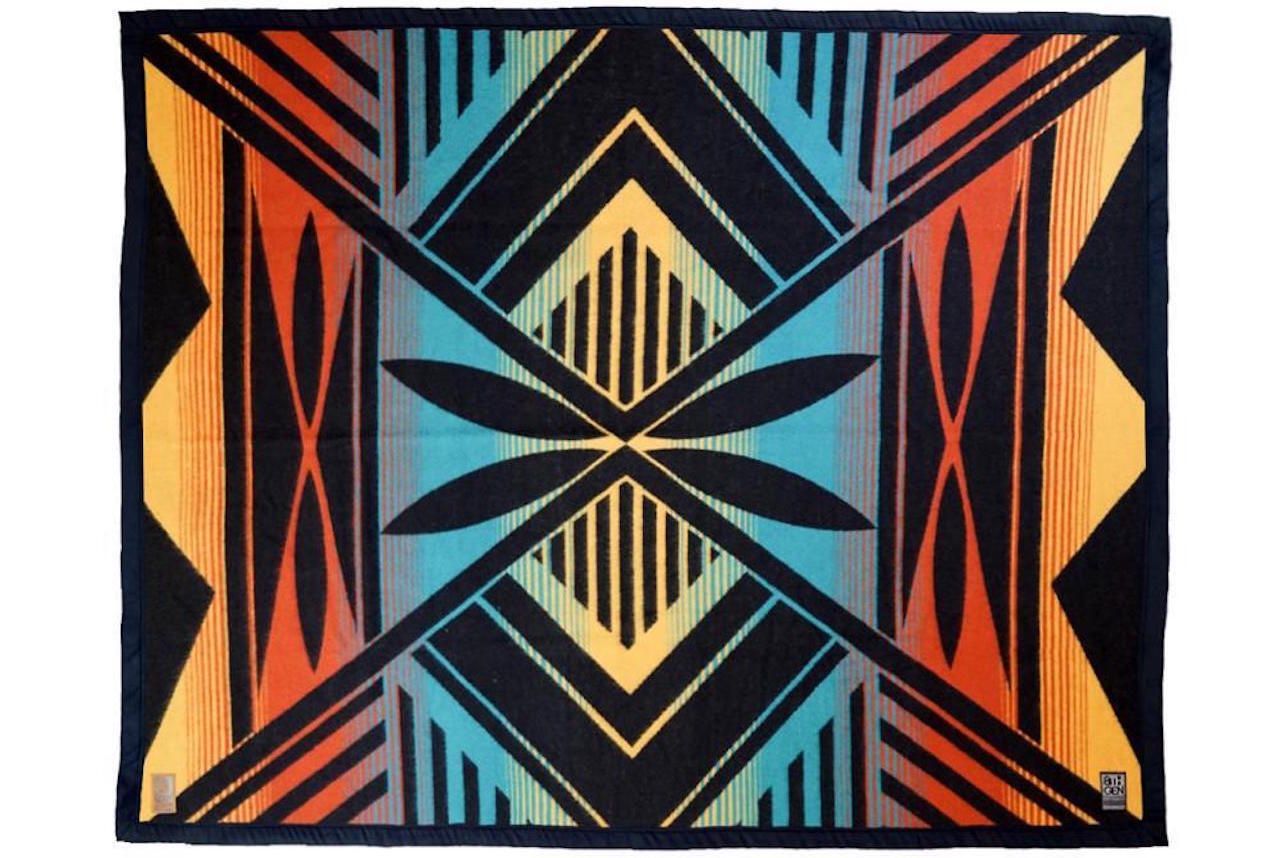
Photo: Milo Creations
Michelle “Milo” Lowden specializes in hand-painted jewelry and is the founder and owner of Milo Creations. Her work is featured on Eight Generation, a company owned by the Snoqualmie Tribe that brings together community-based Native artists in the United States.
Lowden’s jewelry is beautiful, but we were drawn to her recent piece of work, the Reflection Wool Blanket. The two-sided blanket is queen size and is perfect for making campouts or road trips a little bit comfier. Lowden’s design features Acoma Pueblo abstract symbols. Five percent of sales from the blanket go toward the Inspired Natives Grant for emerging arts entrepreneurs.
Sports Hijabs by Asiya, $35

Photo: Asiya Sports
The idea for this company came from Brian Coyle Community Center gym in Minneapolis, where Asiya’s founder, Fatimah Hussein, has been helping young Muslim girls gain better access to sports for the past decade. With the drive to make these girls feel comfortable to compete in public all while upholding their religious and cultural beliefs, Hussein designed hijabs that are comfortable and modern. Hussein states in the company mission that clothing should “enable your endeavors, not be a barrier.”
Her sport hijabs come in three different styles. All are made from an ultra-lightweight fabric that’s sweat-wicking and breathable. The swim hijab is a new innovative design and is perfect for anyone looking for something that stays in place and is lightweight.
Socks by Heim Made, from $26
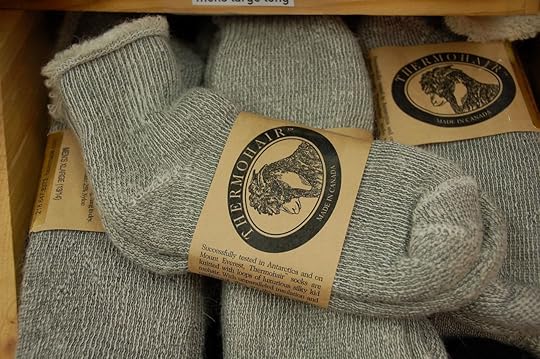
Photo: Heim Made
Heim Made was started by mother and daughter partners Rose and Gretchen Heim. Their company is “home-grown and home spun” in northern Minnesota. Focusing on comfortable and stylish solutions to cold weather, Heim has a huge range of apparel from tights and leggings to duck feet boots.
The mohair socks caught our attention because, quite frankly, who doesn’t like a gift of cozy socks for Christmas? Spun from luxurious kid mohair (which are the fibers that come from a first-sheared young goat), these ankle and boot length socks are perfect for anyone who enjoys the outdoors and does not want to suffer from chilly toes.
Beanie by Skida, $28
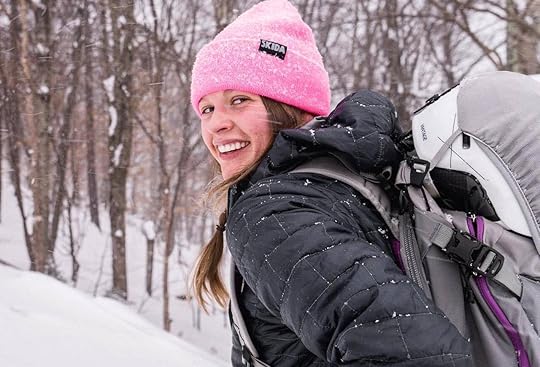
Photo: Skida/Facebook
Skida was founded by Vermont skier Corinne Prevot, who first started making hats for her Burke Mountain Academy cross country ski teammates. As demand grew for the fun and colorful hats, so did the company, but 11 years later Prevot is still committed to local production in Vermont and limited edition products.
This year’s range of beanies is as bright and fun as past collections, and all come with the iconic Skida tag on the front. A cold-weather essential, the Ridge beanie is super durable with a 3-inch cuff.
Wanderful’s Traveler Membership from Wanderful, $79
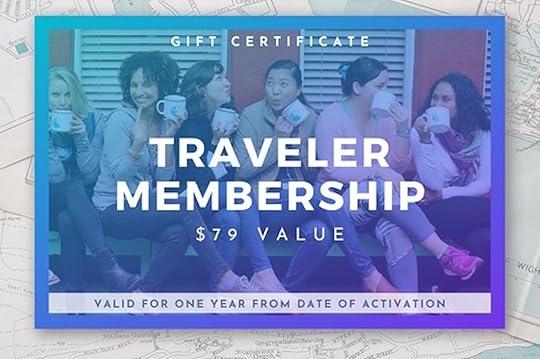
Photo: Wanderful/
Wanderful has brought together a community of female travelers who support and share resources through an online and offline network.
“As many as 40% of the women in our community have at one point opted out of a trip because they didn’t feel safe, or because of someone else’s concerns about their safety,” Wanderful founder and CEO Beth Santos wrote in an article on Medium. “By creating a network that caters to women travelers, we do not feed into or perpetuate existing fears. We give women a space to build powerful, positive relationships with other women around the world in whatever capacity they choose.”
This is the ideal platform for anyone who is thinking of taking a solo trip and is looking to share stories and meet other women. It has a membership gift certificate that allows travelers to connect to one another. The membership also grants access to monthly webinars, digital meetups, community discount deals, and free events.
Sweaters from Gitchi Adventure Goods, from $52

Photo: Gitchi Adventure Goods/Facebook
Co-founders Sarah Rykal and Sam Peterson came together to launch Gitchi Adventure Goods, an outdoor gear company with an admirable moral compass. Some of the core principles include incorporating environmental stewardship and social equity into all aspects of the business, pushing the needle toward diversity and equality, and doing a kick-ass job while having fun.
They also give back to the outdoors that they love and draw their creative inspiration from. The company’s Public Lands Pledge promises to give 10 percent of proceeds to supporting national parks, state parks, and other wilderness areas.
We love the “Nature is Female” crewneck ($52) that “is for anyone who wants to honor Mother Nature and affirm women’s equal place in the outdoors.” Equally great is the range of badges ($6.50) and stickers ($2.50), which make for perfect stocking stuffers.
Greeting cards by Compass Paper Co., $5

Photo: Compass Paper Co./Facebook
Compass Paper Co. is not your usual greeting card company. Instead of typical designs, “We make cards for people just like us. People that love to get outside. That get excited about planning trips and eating s’mores,” the company proclaims on its homepage.
Founded by Annie Lang, the Michigan-based company produces a huge range of fun cards, pins, drinkware, keychains, notebooks, and a ton of other goodies. The company also pledges a portion of its earnings to the Planet and Alliance for the Great Lakes. The products are made from recycled paper with vegetable-based inks, and everything is sourced and manufactured ethically.
Compass Paper Co.’s holiday greeting cards are so cute they are bound to put a smile on your giftee’s face — even after a year like this.
Layers by Wild Rye, from $28
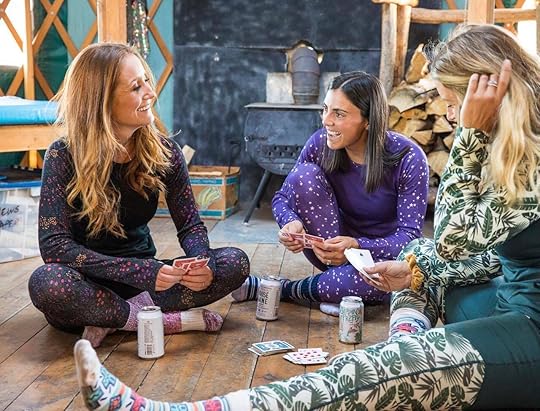
Photo: Wild Rye/Facebook
Wild Rye’s CEO and co-founder Cassie Abel and co-founder Katy Hover-Smoot make female mountain apparel, but much like all the female leaders listed here, they go so much further than manufacturing and distributing goods.
“One of the many things that sets us apart is that we design for women and only women,” Abel told SNEWS in 2018. “We are dedicated to fitting a wide array of body shapes, comfortably. We measure and fit every garment on a minimum of three real women that wear the same size but are different shapes, heights, and proportions. This means better fit for a broader range of women — not just elite athletes.”
Wild Rye has a sustainable supply chain, and the founders are as committed to supporting the environment as they are to enjoying it. Wild Rye partners with SheJumps — an organization empowering women to get outside that launched Women-Led Wednesday — which aims to support women in business.
The collection of cool weather layers includes base layer tops ($109), leggings ($99), a neck warmer ($28), an alpine hat ($36), and a bandita ($28) if you’re looking to fully outfit your loved one. You can also purchase a bundle of mix-and-match tops and leggings.
Bracelets by Little Words Project, from $20
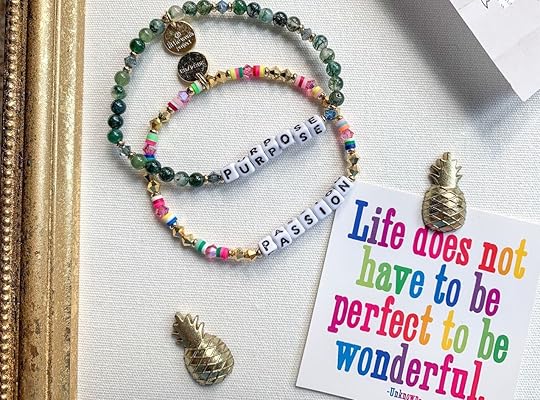
Photo: Little Words Project/Facebook
Little Words Project describes itself as a community of Nice Girls that believes in supporting women, as well as that collaboration wins out over competition and kindness builds confidence and fosters self-love.
This women-run jewelry company produces handcrafted bracelets with inspirational words. The bracelets are inscribed with a unique code that registers the owner to what the company calls the “Nice Girl Gang — a community of women dedicated to building each other up.” The group is based online, and with the code your giftee can gain access and meet other badass women.
You can shop for a range of words such as “fearless,” “grateful,” and “be you,” or you can customize the bracelet with a personalized message. 
More like thisTechnology + GearBest last-minute stocking stuffers for travelers
The post 14 perfect gifts for women who love to travel appeared first on Matador Network.

Virtual tours on Amazon Explore

The pandemic has hit the tourism industry hard, impacting the people who work in travel’s hospitality, food and beverage, cultural history, and entertainment areas. Now there’s a creative and useful way to get at least some of the feel of travel while also supporting businesses and workers in the locations you yearn to visit. Amazon Explore allows anyone with a computer and internet connection to take a live guided tour of destinations and experiences around the globe. Here’s the lowdown on this rising new digital travel guide catalog — and a few of the most unique tour options to try this fall and winter.
Travel from your sofa

Photo: bearinmind/Shutterstock
The idea of Amazon Explore is to allow travelers to experience a location, albeit digitally and without actually leaving home. You are paired up with a local guide in the location of choice who leads you through the location and the activity you select. Most tours last between 30 and 60 minutes and cost between $20 and $150. The best part is that each experience is one-on-one, so if you want to spend more time on a certain attraction during a cultural tour, or mastering a specific dish in a cooking class, that’s totally doable.
Each is held live with most operated by well-known tour companies like MyProGuide and Intrepid Urban Adventures. Along the way, you can ask questions and prod for local insight. You could also screenshot things along the way as if you’re photographing them in person — though there’s no guarantee that your friends and family will believe you were there. Many tours currently offered don’t specify whether your partner, friend, family member, or roommate can officially join you on the tour.
To select a tour, browse by global region, choose the tour you want to go on, and sign up for an available time. After signing up you’ll be given instructions on how to join the tour along with materials to help you prep for the best possible experience. Three types of tours are available: Culture & Landmarks, Learning & Creativity, and Shopping.
You might be thinking, “How am I supposed to go on a shopping tour in a location I’m not in?”
This, of course, is how Amazon plans to make its money on the venture. On many tours — and shopping tours in particular — you’ll have the opportunity to purchase the items you look at through Amazon. Purchasing items through the tour is a good way to support local merchants, but it won’t hurt to do your due diligence and ask the tour guide how much of that money actually makes it to the vendor.
Amazon Explore is designed to be as close to an in-person guided tour as possible. At the time of your experience, you’ll be connected to the host through the Amazon Explore platform. The two of you can talk back and forth to each other much like a normal walking tour, but the host cannot see you; the camera is only one-way.
The service is still new and only a few dozen tours are currently offered, though more will be launched in the coming months. Here are five of the most unique tour options so far.
The best Amazon Explore tours to check out this winter
Shop handmade gifts and accessories made by women in Peru
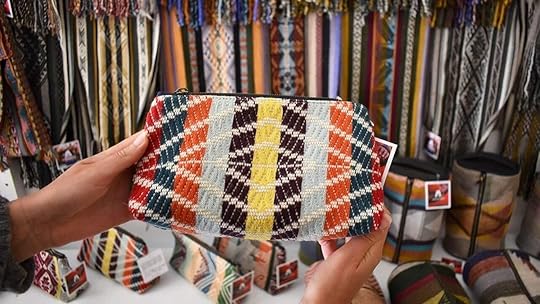
Photo: Amazon
Offered by Awamaki
$20, 35 minutes
Certain tour experiences are designed to showcase local sundries and support women in the communities where they were made. This tour is like visiting a Peruvian market or seller’s house, allowing you to learn the history behind Andean textiles and make purchases to support the Quechua women in Peru’s Sacred Valley. Clothing items, handbags, scarves, and other accessories are on offer, and unlike just buying the item off the internet, you get the story behind it and the comfort of knowing that your money will benefit the person who made it.
Cook Spanish Paella with a chef in Barcelona
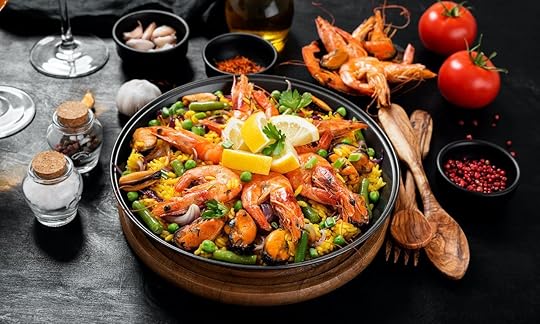
Photo: nelea33/Shutterstock
Offered by Barcelona Paella Experience
$55, 60 minutes
Few Spanish foods have reached global fame in the way that paella has. This rice dish, often cooked in a large pan with two handles, is tough to prepare correctly even with a specific recipe. As such, it makes for a popular cooking class among tourists to Madrid, Barcelona, and other parts of Spain. Now you can have the experience in your own kitchen, following along with a pro chef as they walk you through the process of preparing a perfect paella from start to finish. You’ll receive the list of ingredients, step-by-step instructions on assembling a paella, and tips on how to get the rice perfectly cooked and flavored.
Virtually tour the Gardens by the Bay in Singapore

Photo: S-F/Shutterstock
Offered by ToursByLocals, Inc
$100, 70 minutes
Singapore’s Gardens by the Bay is a stunning collection of flora, fauna, and futuristic revelry. This tour walks you through the most iconic sites including the Supertree Grove, home to the 160-foot-tall artificial “trees” that collect rainwater and generate solar power while cleaning the air for the surrounding gardens You’ll also stroll through the tropical Heritage Garden to explore native plant life in Singapore and get some incredible views of the city’s skyline to boot, including of the famed Marina Bay Sands hotel.
Enchanting Rialto: Exploring the markets of Venice
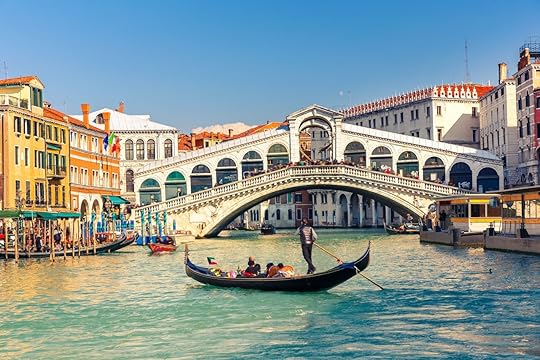
Photo: S.Borisov/Shutterstock
Offered by Essence of Berlin
$109, 60 minutes
No longer is The Venetian on the Las Vegas strip the closest you can get to Venice without leaving the country. This tour takes you across the Rialto bridge and into the neighborhood’s bustling fish market, where you’ll have the chance to peruse while soaking in the scenery of the city as Venetian gondolas make their way up and down the Grand Canal. This tour is as much a historical one as it is a chance to experience the market, as your tour guide outlines the city’s role in the spice trade, as a major banking center, and how the area came to be an iconic symbol of travel to Italy.
Virtually experience Taiwan’s religious customs at Taipei’s Longshan Temple
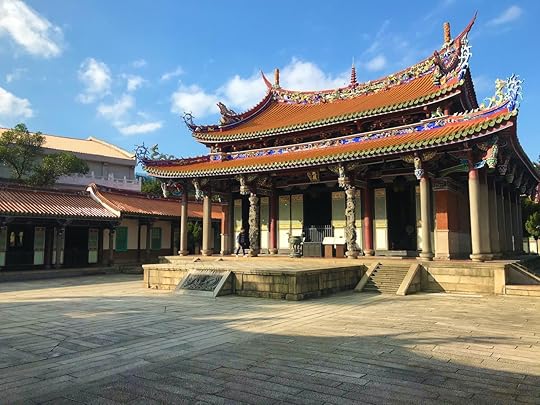
Photo: SaldyS/Shutterstock
Offered by Tour Me Away
$60, 60 minutes
More than 100 “folk gods” reside at Taipei’s historic Longshan Temple, built in 1738 above the Danshui River and serving as a major religious hub in the area ever since. The tour is a walk through the temple and a lesson in its history and significance — you could really get into the spirit and choose the god(s) you want to pray to. Perhaps you’re looking for a match made in heaven (Old Man Under the Moon) or a bit of empathy (you’ll see Guanyin, the bodhisattva of compassion and mercy immediately upon entering). Other gods you’ll glimpse are Wenshu, the bodhisattva of transcendent wisdom, and Puxian, the bodhisattva of action. You’ll also have your fortune read. 
More like thisTravelRelive the golden age of plane travel through the era’s gorgeous airline art
The post Take personal guided tours of the world, from home, with Amazon Explore appeared first on Matador Network.

Matador Network's Blog
- Matador Network's profile
- 6 followers



